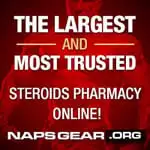Found it.
NFPT Personal Trainer Magazine
Fat For Fine Tuning??
by Ron J. Clark, NFPT President & Founder
"If you have never used last minute fat ingestion as a method of
improving the effectiveness of pre-contest carb loading, listen up;
because not only does it make sense in the test tube, it has already
been used on the pro scene successfully!"
Several months ago, I remember reading an article entitled "The Pork-Chop
Diet", written by a doctor whose name I don't remember. I do remember however,
reading it with an open mind. While I saw no scientific basis for his conclusions, he
did get me thinking about just how vital fatty acids are to muscle tissue recovery
and glycogen loading.
The more I thought about it, the more ideas I kept coming up with. This eventually
prompted me to do considerable research on the topic. In applying some of the
most basic scientific principles concerning muscle physiology and body functions
relative to fat metabolism, I ultimately stumbled upon a theorized method of
optimizing glycogen replenishment through the properly timed and controlled
ingestion of fat during contest preparation!
At this point, for whatever reason, I still wasn't really motivated enough to write
this piece. However, recently a national level bodybuilder, Mike Mergl and I, were
talking and the topic of fat intake came up. He immediately told me that Flex
Wheeler said he used last minute fat intake in preparing for a contest not long
ago, and said it worked great. I then proceeded to beat Mike to death with all the
intricate detailed reasoning for Flex's success in using this pre-contest dietary
concept. And, I knew that very instant that I would eventually write this piece.
I just came back from the NPC Nationals in Fort Lauderdale, Florida. Among the
many professional bodybuilders I spoke with, I met with Mr. Steve Brisbois, now
retired from professional competition, after making his mark by placing 5th in the
'90 Arnold Classic; 6th in the 91' Arnold Classic; 5th in the '92 Arnold Classic;
11th in the '92 Olympia; 4th in the Italian Open; and 5th in the Holland Grand Prix.
Steve is one of the most tremendous bodybuilding personalities I have ever
known. I mean, trust me, this guy is intelligent, professional, and a real straight
shooter. Anyway, I brought up the topic of last-minute pre-contest fat ingestion,
expecting to really impress the guy. And, guess what? He
immediately smiled and said, "Yeah, I know Ron. I did that a lot myself!" Steve
was adamant in telling me how well last-minute fat intake worked for him.
With this said, I am confident that if you have never used last minute fat ingestion
as a method of improving the effectiveness of pre-contest carb loading, listen up;
because not only does it make sense in the test tube, it has already been used on
the pro scene successfully!
"Even if this fat related method of pre-contest carb loading
enhancement were to fail you miserably, the low quantity of fat used,
and the last minute timing of its ingestion, will absolutely not result in a
measurable increase in bodyfat prior to your show!"
I am certain there are those of you out there who are as little informed on this
topic as I was prior to doing my homework. Furthermore, the successful
application of this procedure, as mentioned earlier, is nothing short of a
confirmation that my theory on last-minute pre-contest fat ingestion is a viable
concept. A concept that you can safely put to work in preparing for your next
show, because unlike the "Pork-Chop" diet, even if this fat related method of
pre-contest carb loading enhancement were to fail you miserably, the low
quantity of fat used, and the last minute timing of its ingestion, will absolutely
not result in a measurable increase in bodyfat prior to your show! So, what have
you got to lose by learning the hows and whys of this concept? Absolutely
nothing!!
I warn you that this report, to a clinician, may be considered premature, as we at
NFPT Headquarters have not yet had the opportunity to thoroughly apply the
following theories to test subjects in a controlled study. I am assuming personal
responsibility in releasing this information now for the following reasons...the
physiological principles involved are sound, the concept has been randomly (and
credibly in my opinion) reported successful in professional competition, and I know
that if I were you, I would appreciate timely, valuable, and reliable information.
Overview of "fat release refusal"
In a nutshell, conventional, low calorie, pre-contest dietary practices, are nothing
less than a preliminary stage of starvation. The greatest difference, in fact, is
that the bodybuilder has not yet suffered the extreme loss of body tissue (to
include mostly muscle). Furthermore, in direct association with one of the
scientific points I will introduce later, the finely tuned bodybuilder and the
unfortunate starvation victim share their bodies' "starvation based" refusal
and/or inability to give up fatty acids from adipose tissue. This occurs since
during this stage of caloric deprivation, these fat stores are dangerously low, and
any further release of fat from adipose tissues would be perceived by the body
as life threatening. This refusal of fat release is brought on in the body via the
Endocrine system's varied hormonal secretions in response to caloric deprivation,
resulting in a "shut-down" of fat mobilization, and slowed metabolism.
Natural -vs-Steroid use & "fat release refusal"
The above overview of this particular survival mechanism relative to fat
retention, should in part present to the natural bodybuilder, an understanding as
to why it is so difficult to get ripped naturally . On the contrary, synthetic
hormones (steroids), among their many other effects, act to effectively "trick"
the Endocrine system's survival mechanism, triggering the continued release of
fatty acids from adipose tissue. This occurs due to the sustained presence of
what the body perceives to be perfectly acceptable and normal levels of blood
hormones (steroids). For this reason, the body will not sense starvation and the
metabolism will remain elevated causing the continued cannibalism of adipose
tissue. This effect of steroids, under extreme conditions, can be life threatening.
In fact, hard training precontest bodybuilders using steroids while on prolonged
low calorie diets, need to be acutely aware of the early warning signs of
"metabolic acidosis" (lightheadedness, dizzy spells, periods of faintness, and
mental confusion). This condition is brought on when the metabolism remains high
and the body is forced to eat away at itself for the balance of energy not
sufficiently provided for in the diet. This condition threatens allcontest-ready
steroid abusers, at every show, and on every level of competition. Short-term
"Ketosis" (an early stage of metabolic acidosis), has been suspect in contributing
to serious health problems relative to steroid use. As a reminder, Metabolic
Acidosis has the potential to result in coma and death with extreme drug abuse
accompanied by extended low calorie dieting!
As yet another reminder to the natural bodybuilder, once this natural "fat release
refusal" mechanism kicks in, adipose tissues will no longer release sufficient fatty
acids and glycerol to efficiently fuel even aerobic activity. If at this point, the
bodybuilder uses aerobics to get that slight edge he's looking for, which is
common, it will have already been too late - this mechanism will have already
kicked in, and sufficient fat will not be released! If this is the case, since fatty
acids cannot be released in sufficient quantities from adipose tissue, the aerobics
performed will require the balance of energy not provided in the diet, to come
directly from remaining living tissue (ordinarily muscle)! This mistake, as common
as it is, can easily be avoided through the proper application and understanding of
body composition testing (skin fold testing is the desired method).
Allow me to set the stage before continuing. With the exception of anabolic
steroid use, there are NO supplements that can provide greater net results than
replacing bad training & dietary principles with good ones! This is a fact that NO
credible expert in this field would ever contest. I contend that manipulating your
nutrient (in this case fat) intake, to your advantage, unquestionably falls into the
category of improved dietary principles. Thus, you can expect to experience much
greater carb loading results in successfully using fat manipulation, than in using
any non-anabolic substance!
The roll fatty acids play in carb loading...
It is a scientific fact that fatty acids are the muscle's desired source of energy at
rest. Fatty acids are taken up into the cell and used to make ATP that fuels the
cell allowing it to perform daily functions. While recovering from high volume
pre-contest training, there is a considerable amount of glycogen that needs to be
replaced using fatty acids at rest as the source of fuel enabling the muscle to
replenish its reserves. No fatty acids...no energy to replenish glycogen reserves!?
Simple! This is why you should consider ingesting dietary fat during those times
when none is available to the muscles through the body's normal pathways
(adipose tissue).
Even when there is sufficient blood glucose present to stimulate Insulin secretions
(during carb loading), this "Insulin carried" glucose can at best be made available
to the cell. But without sufficient fatty acids, what alternative source of ATP
production will the muscle use enabling it to efficiently process and store the
Insulin carried glucose as glycogen? I contend, that in the absence of sufficient
fatty acids, at minimum, the efficiency of the uptake, conversion, and storage of
glucose as glycogen will be significantly diminished!
The rationale?? Fatty acids are the desired source of ATP energy production at
rest. When near "O" fat provision occurs, and the muscles are still not
completely carb loaded, the introduction of dietary fat while carb loading will once
again provide fatty acids for the production of ATP energy necessary to enable
the muscle to efficiently perform the tasks of storing glycogen to the point of
super-saturation. Is that hard to understand or believe? I think not!
With this understanding...here we go. You are 12 hours out from your show. You
are natural, you have been carb loading for the past 2 days, and your regular skin
fold tests have revealed the following information...
#1 - The measure that reflected the greatest amount of lean weight was 200 lbs.,
two months ago, after a 1 week layoff.
a) A layoff prior to this measurement was crucial because it allowed the muscles
to be in a fully carb loaded state on the day of the measurement.
b) You have been successful in maintaining structural tissue for the past 2
months (using regular strength tests, to insure against structural tissue loss).
This means that any reduction in lean weight can be attributed to
incomplete carb loading.
#2 - Your current lean weight is 198 lbs..
a) You know there is room for more glycogen loading even though you have been
carb loading for the past 2 days, because of the comparison between your past
optimum lean weight capacity of 200 lbs., and your current lean weight of 198 lbs.
#3 - You look great, but for the past 3 days, skin fold tests show that your fat
weight (not percentage) has leveled off. As a reminder, you have been carb
loading for the past 2 days.
a) Fat is not being released, and the survival mechanism has kicked in. Short of
drug use, resign yourself to the fact that you will not loose any more fat weight.
b) Now is the time to introduce this theory! the best you can do now is to
optimize glycogen loading by introducing dietary fatty acids, and you know you
have room for another 2 lbs. without running the risk of gaining additional fat
weight.
At this point, the carbs you have been taking in for the past 2 days are not
resulting in a significant fat weight reduction (indicates that fatty acids from
adipose tissues are not effectively being used by the muscles for ATP production
and a consequent optimum glycogen storage), just a fat percentage reduction is
measurable since your lean weight is obviously increasing. There is a huge
difference! And, no matter how much better you are beginning to look, you can
look better! The reason this theory has not been addressed in the past may well
be because in looking in the mirror and in watching the bodyfat percentage drop
while carb loading, bodybuilders are typically satisfied. The truth of the matter is,
that while lean weight increases the fat percentage is going to drop whether you
are continuing to loose fat weight or not!
Since your fat weight has remained pretty much the same for the past few days,
it should tell you that your carb loading could be more efficient by providing the
muscles with the dietary fat it is not currently being provided with by the adipose
tissues!
In theory, this dietary fat ingestion will result in even greater glycogen uptake and
storage, because without fatty acids the muscles are not efficiently producing the
ATP energy to get the job done! When introduced, dietary fatty acids will allow
you, the natural bodybuilder, to stretch that stubborn adipose tissue to its limits
by loading (supersaturating) the muscle to its capacity! So, don't be satisfied with
just carb loading, give your muscles that extra ATP energy it is being deprived of
in these crucial final hours...FATTY ACIDS!!
Now that you understand the need for last minute fat ingestion, the magic
questions are: #1-What kind of food? #2-Exactly when should I ingest it? And,
#3-how many calories worth of fat should I ingest? Right?
Well, the type of fat is easy...Medium Chain Triglycerides is the right answer to
this question. MCTs are a chain of fatty acids that are quickly taken up in the
relative cellular components for processing ATP more rapidly, making this the
obvious fatty acid source of choice.
The answer to question number two is relatively easy as well. You should begin
supplementing MCTs when your total fat weight has leveled off just prior to your
show.
Now then the answer to the final question is going to be a bit more complicated.
How much fat? Well, we know for a fact that it takes 3,500 calories over your
weight maintenance needs (BMR + activity expenditure) to result in the addition
of one pound of body weight. Therefore, if you are 2 lbs short of your maximum
lean weight (per the example measured above), you can safely consume 7,000
calories above your current weight maintenance intake, over the remaining time
prior to the contest. Since the fatty acids ingested will ultimately be converted
and used for ATP, their caloric value should not be included in this 3,500
calories/pound calculation. The tricky part, for which there is no objectivity, is
how many calories of MCTs.
First of all, it would be appropriate to maintain the presence of fatty acids in the
bloodstream constantly. Therefor, it makes sense to ingest MCTs, in small
quantities, around the clock, while finishing off your carb loading. Until more
controlled research is done in this area, the total calories of MCTs to be used in
contest preparation will be speculative at best.


 Please Scroll Down to See Forums Below
Please Scroll Down to See Forums Below 










